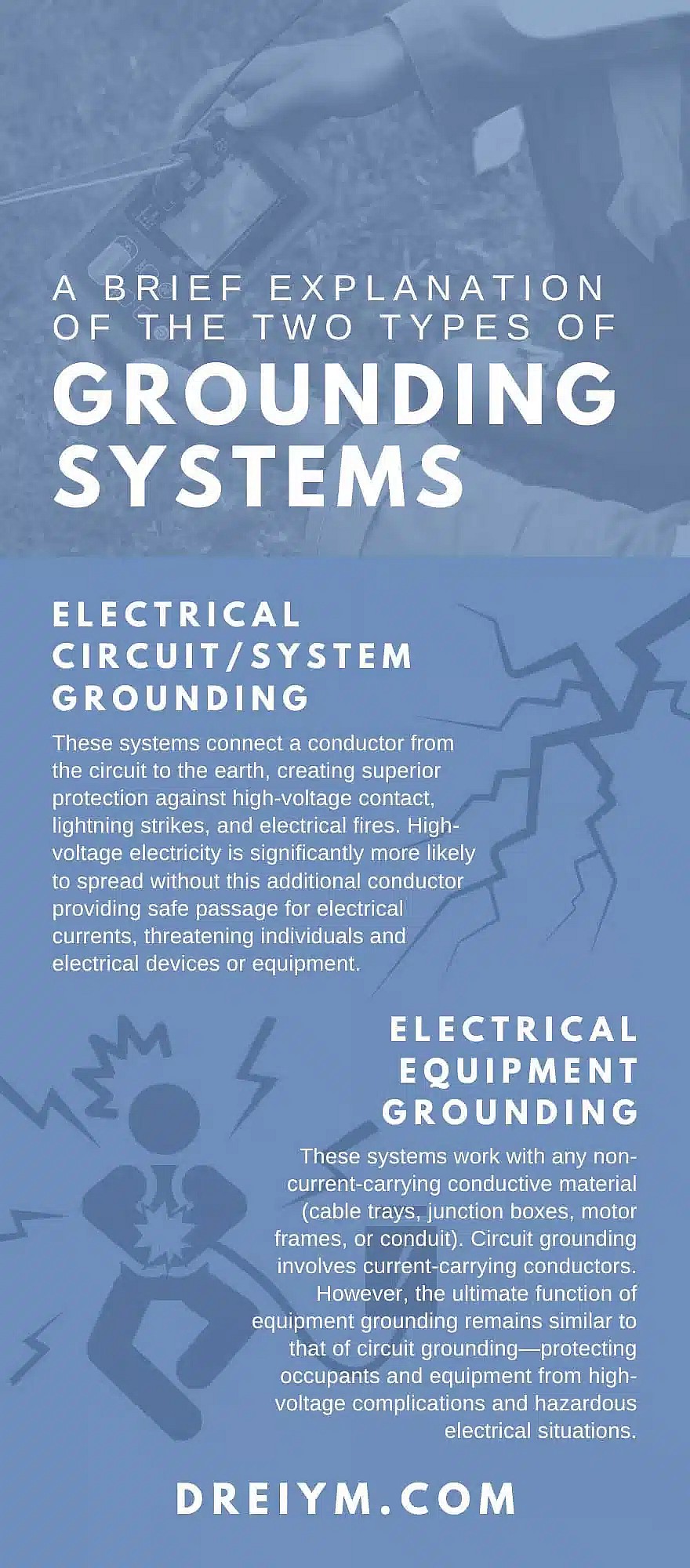A Brief Explanation of the Two Types of Grounding Systems
In 1752, famed Philadelphian Benjamin Franklin boldly flew a kite with a metal key on it through a thunderstorm. Lightning struck the key, displaying the raw characteristics of electricity in front of human eyes for the very first time—except, this isn’t really how the story goes. Humans were well aware of the power generation potential of electricity long before Franklin’s kite flight.
The greatest myth associated with this American folklore is that Benjamin Franklin held onto a kite that was struck by lightning and survived to tell the tale. In reality, a lightning strike such as this would carry enough amps and voltage to kill a human instantly. Electricity will always find the quickest route to the ground. In some instances, that route is the human body. When this occurs, it can cause a fatal electrical shock.
Most electrical systems and devices connected to high-voltage currents feature electrical grounding. We want to ensure your electrical appliances and infrastructure is properly protected. Here is our helpful guide and explanation of the two types of grounding systems, how they function, why they’re important, and how to recognize grounding complications such as ground fault.
Circuit/System vs. Equipment Grounding
First and foremost, the two types of grounding systems are circuit/system grounding and equipment grounding. Each form of earthing protects individuals and electrical devices from high-voltage-related complications. Read on to learn the differences between the two variations.
Electrical Circuit/System Grounding
Electrical circuit/system grounding protects entire power distribution systems throughout buildings. More specifically, system grounding safeguards all circuits and service entrance wires connected to the electrical distribution system. Common residential applications for circuit/system grounding include electrode and water pipe grounding. The ground ring and concrete-encased electrode grounding are reserved for industrial or commercial buildings.
These systems connect a conductor from the circuit to the earth, creating superior protection against high-voltage contact, lightning strikes, and electrical fires. High-voltage electricity is significantly more likely to spread without this additional conductor providing safe passage for electrical currents, threatening individuals and electrical devices or equipment.
Electrical Equipment Grounding
While circuit/system grounding safeguards entire distribution systems, electrical equipment grounding offers localized protection for the equipment itself. For example, electrical equipment grounding ensures you won’t shock yourself when you touch a metal appliance, such as a stainless steel refrigerator.
These systems work with any non-current-carrying conductive material (cable trays, junction boxes, motor frames, or conduit). Circuit grounding involves current-carrying conductors. However, the ultimate function of equipment grounding remains similar to that of circuit grounding—protecting occupants and equipment from high-voltage complications and hazardous electrical situations.
What’s the key difference between these two grounding systems? Circuit/system grounding protects electrical distribution systems and the tools connected to them. Equipment grounding enhances equipment safety for individuals. Together, these grounding systems save lives and buildings in a variety of settings.
The Importance of Grounding Systems
It’s most likely obvious by now, but it’s worth repeating the overwhelming importance of grounding systems. These protective circuits significantly reduce the chances of fatal electrical shocks, electrical fires, and other high-voltage problems.
As stated before, electrical currents will use the human body as a route to the earth, causing significant internal tissue injuries due to high volts and amps. High voltages will trigger the most bodily damage, while high amps can interfere with heart activity and initiate cardiac arrest. Any electrical system must feature proper grounding to avoid injuries and costly infrastructure damage. This is true for all buildings—commercial, industrial, retail, or residential—regardless of occupancy type.
Common Grounding Complications
As with an electrical hazard, you are bound to experience complications associated with your grounding systems. Some problems, such as ground loops (created by multiple pieces of equipment sharing a common circuit) and excess grounding rods, cause performance issues for your electrical equipment. Other concerns, like missing safety grounds in electrical systems or ground faults, can significantly harm individuals and buildings.
Ground faults can hamper a business’s productivity and overall success and permanently damage expensive electrical equipment. Regular inspections (or following noticeable performance issues or an electrical emergency) by professional electricians are highly recommended to ensure commercial building electrical systems are properly grounded.
The Pearl Street Power Station: Early Circuit Earthing Practices
Now that you understand the differences and the overall importance of grounding systems, let’s learn about their origins, specifically electrical system grounding. Complex electrical systems were first invented in 1882 with Thomas Edison’s Pearl Street Power Station in New York City. This power plant supplied enough energy to power 5,000 lamps across 85 Manhattan customers. More importantly, it featured an early version of a grounding electrode that returned negative currents to the plant’s steam-driven 110-V dynamo.
Edison’s designs were flawed. His floating approach allowed DC currents to flow freely throughout connected buildings and even the surrounding neighborhood. A report stated that a horse suffered a minor electrical shock when walking over an electrified patch of soil near the Pearl Street Station. The famous American inventor returned to the drawing board and created a superior solution. Instead of using one pathway for returning currents, Edison divided his grounding system into two points, each responsible for outgoing or returning currents. Ultimately, his three-wire design was adopted as the standard for electrical distribution in homes and residential buildings.
You can ensure your commercial, industrial, retail, residential, or other occupancy-type building is safe from serious electrical hazards with this brief explanation of the two types of grounding systems. Hiring quality ground testing companies is essential, whether you’re starting a new construction project or require an exam of existing electrical systems. Luckily, our friendly team at Dreiym Engineering has the experience, knowledge, and equipment to help you understand your electrical systems.
Our ground-testing capabilities include the following:
- Clamp-on readings
- Two-pin methods
- Fall-of-potential methods
- Cathodic protection interference
- General testing of existing systems
These services ensure the quality and functionality of your electrical equipment and reduce deterioration and major, expensive complications. Most importantly, our services are conducted under the National Electrical Code’s guidelines. Contact us today to learn more about ground testing and related electrical protection processes.













































